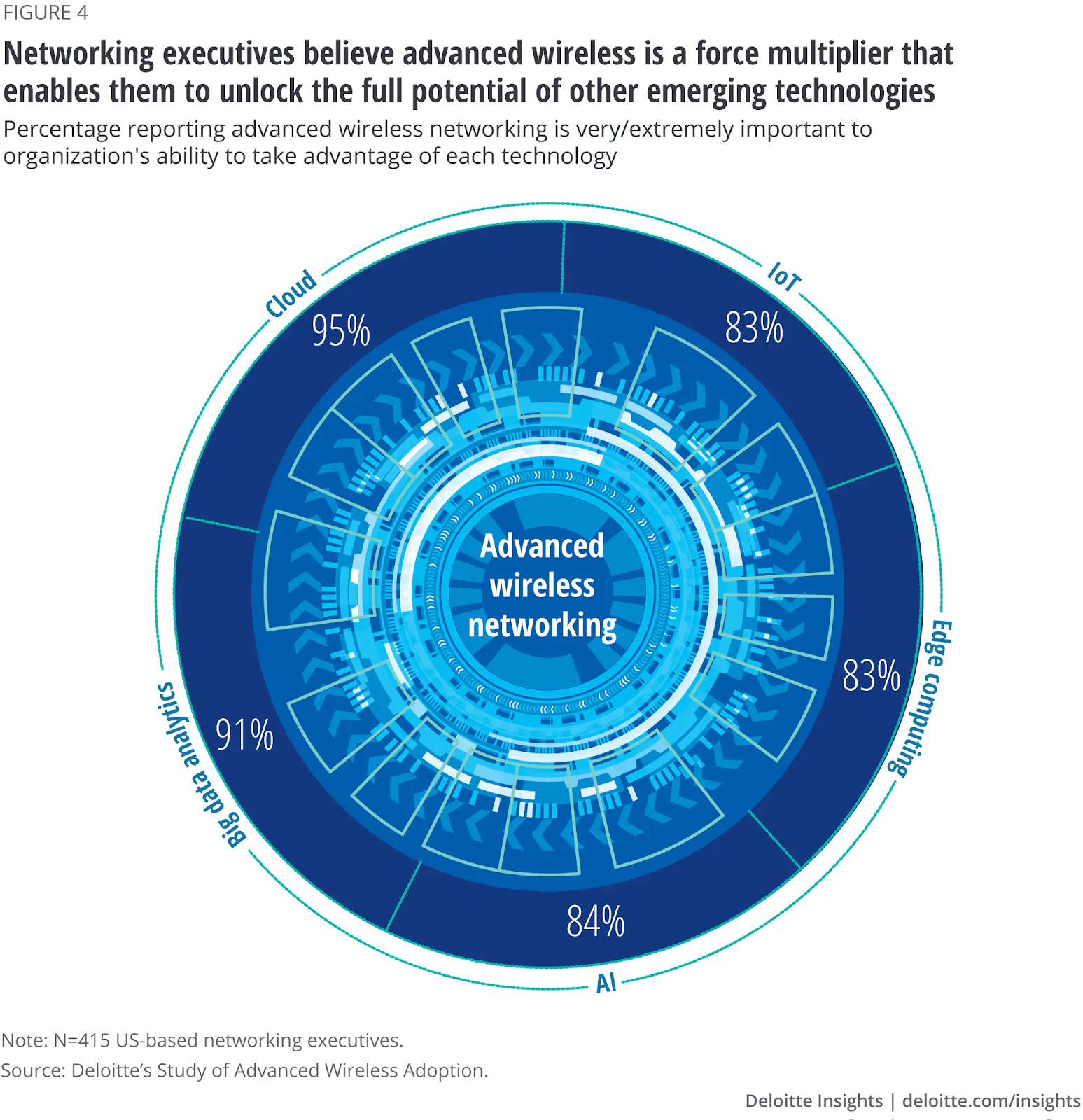A new survey by Deloitte shows that 87 percent of 415 information technology and line-of-business executives believe their company can create a “significant competitive advantage” by leveraging advanced Wi-Fi 6 and 5G. But there is an important likely caveat.
Those connectivity options are valuable because they allow enterprises to leverage the internet of things, edge computing, cloud computing, big data analytics and artificial intelligence.

source: Deloitte
Some 86 percent of the executives surveyed believe that advanced wireless will substantially transform their organizations “within three years” and 79 percent say the same about the effect of these technologies on their industry.
More than 80 percent believe advanced wireless connectivity is “very” or “extremely important” to their organization’s ability to take full advantage of artificial intelligence, edge computing, internet of things, cloud, and big data analytics. That might be a clue to what executives are thinking. These days, “5G” has become a sort of shorthand phrase for the full complement of business advantages firms might reap from applying AI, IoT, edge computing and better analytics.
Enterprise executives who say they believe 5G and Wi-Fi 6 will be important are not looking to improve connectivity, which they say they are satisfied with. More than eight in 10 of these executive decision-makers are “satisfied” or “extremely satisfied” with a range of traditional performance characteristics of their current wireless networks, including reliability and resilience, data speed, latency, coverage, location accuracy, energy efficiency, and device density.
Instead, they are looking beyond network metrics such as reliability and coverage and are instead adopting advanced wireless to “unlock competitive advantage and create new avenues for innovation in their operations and offerings,” a study by Deloitte suggests.

source: Deloitte
Today, 4G and Wi-Fi are the most valued wireless technologies, with 75 percent and 65 percent of executives rating them within the top three critical wireless technologies for their business initiatives respectively. In comparison, only 30 percent of respondents currently consider 5G or Wi-Fi 6 as a top-three critical technology.

source: Deloitte
Considering all the wireless technologies (e.g., 4G, 5G, various types of Wi-Fi) they’re planning to use over this period and the cost of people, hardware, software, and external consulting support, our respondent organizations estimate their three-year spending at US$115.7 million on average.
Fifty-seven percent report that their organization is currently in the process of adopting 5G and/or Wi-Fi 6 (including planning, testing, and piloting), and another 37% plan to adopt these technologies within the next year.

source: Deloitte
Executives also expect to see tangible results within a few years. As with most such expectations, there is a high risk the benefits will take longer to achieve.

source: Deloitte